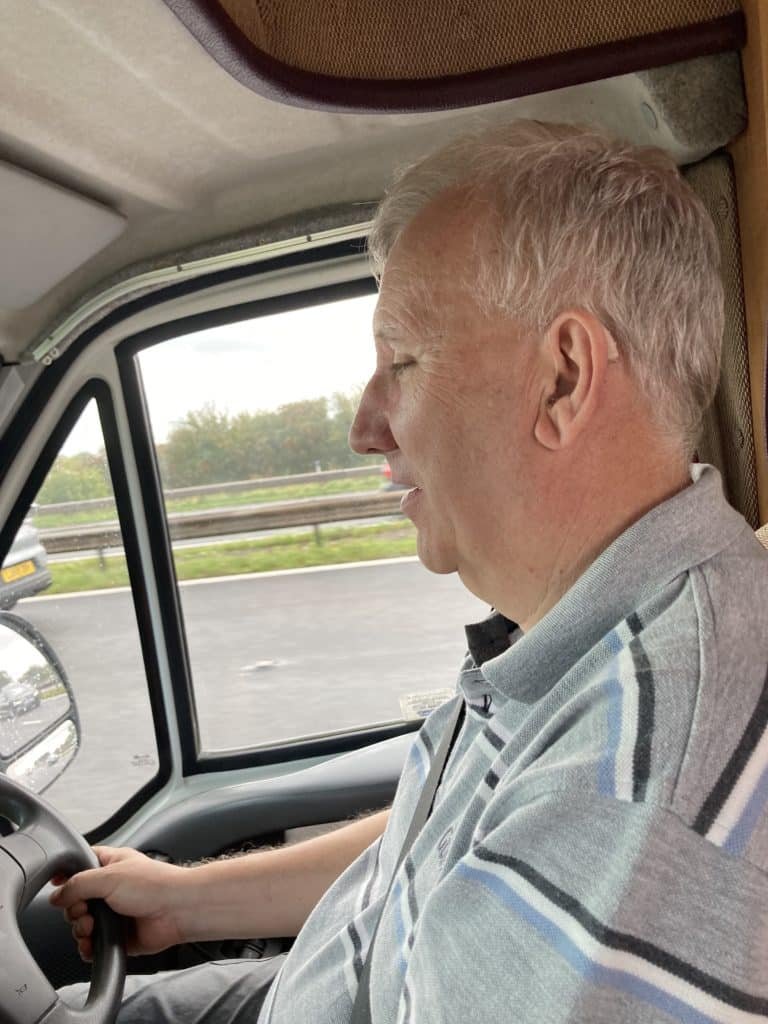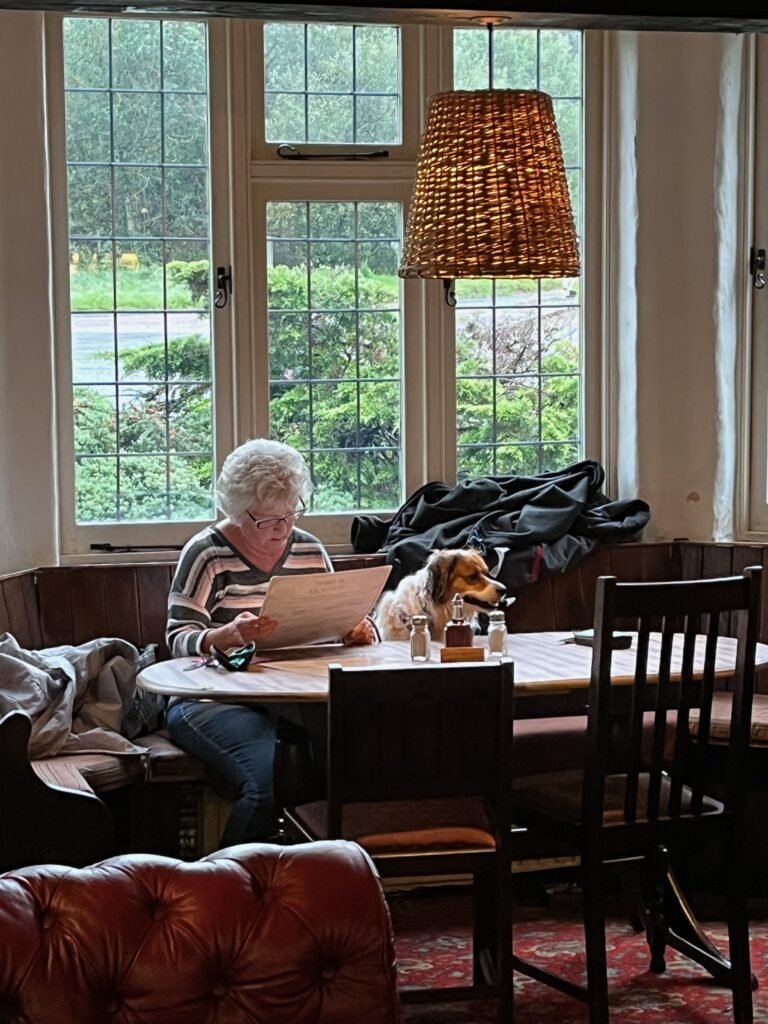
When Ann phoned the Crown Inn in Catcott, they advised that they were closed for a week. However, they did recommend the Fox and Goose Pub. So she called them and they were delighted to welcome us on Saturday.


It was our wedding anniversary, so Ann booked a table for 6:00 p.m. We picked up the boat (we call the motorhome the boat because every time either of us speaks about it, we say the boat, so that has stuck now) from the storage at 10:30 a.m., loaded it up, and headed south on the M5.

It’s not far from us, just one junction down the M5, junction 22 is Highbridge. The whole journey is straightforward: off at the junction down to the roundabout and turn right onto the A38. Not far along you can see the Fox and Hounds Pub on the right. Turning down the lane and then almost immediately left into the large car park.
The best spot is to the far right of the car park, the flattest area. There is a lovely grass area with picnic tables, but we went in February, so it was a little cold for outdoor sitting.
We checked in with the friendly and helpful staff and headed out to walk to and up Brent Knoll. Returning after a lovely walk, without climbing up the Knoll due to it being far too muddy, we settled down for lunch and a lazy afternoon.


Promptly at 6:00 p.m., we headed to the pub for dinner; everything on the menu sounded delicious. The food we chose was excellent, and the service was five stars.
After a peaceful night, we also had an adequate breakfast, which could have been better. I can recommend the Fox and Goose as a pub stopover. We will visit again in the summer so that we can climb Brent Knoll and take advantage of the beer garden area.
Brent Knoll, a prominent landmark in Somerset, England, boasts a rich history spanning millennia. Its story intertwines with the lives of ancient peoples, medieval lords, and modern communities, leaving behind layers of heritage and significance.
The origins of Brent Knoll trace back to prehistoric times. Archaeological evidence suggests that the area around the Knoll has been inhabited since at least the Bronze Age, around 2000 BCE. Burial mounds and other artifacts discovered in the vicinity attest to early human activity in the region. These ancient settlers likely recognized the strategic value of the Knoll, situated on a prominent hill overlooking the Somerset Levels and offering commanding views of the surrounding landscape.
During the Roman occupation of Britain, Brent Knoll likely served as a vantage point and potentially a defensive position. Roman artifacts, including coins and pottery fragments, have been unearthed in the area, indicating Roman presence and activity. However, direct evidence of Roman fortifications or settlements on the Knoll itself is scarce.
With the decline of Roman influence in Britain, the Anglo-Saxons emerged as the dominant cultural and political force in the region. Brent Knoll, with its commanding position, may have been a site of significance during this period, though specific historical records are sparse. The name “Brent” itself is believed to derive from the Old English word “brynet,” meaning “burnt,” possibly suggesting a connection to ancient fires or beacons lit atop the Knoll for signaling purposes.
The medieval era saw the construction of Brent Knoll’s most iconic feature: its church. St. Michael’s Church, situated at the foot of the Knoll, dates back to the 13th century, though it likely replaced earlier religious structures on the site. The church, dedicated to the archangel Michael, reflects the Christianization of the area and stands as a testament to the enduring spiritual significance of the Knoll.
Throughout the Middle Ages, Brent Knoll remained an integral part of the local landscape, its prominence marked by the presence of the church and the surrounding agricultural activity. The Knoll itself may have served as a hunting ground or grazing pasture for the lords of the nearby manors.
In the centuries that followed, Brent Knoll continued to be a focal point for the surrounding communities. The landscape evolved with changes in agricultural practices and land use, while the church remained a central hub for religious life. The Knoll also found itself entwined with broader historical events, such as the English Civil War, during which Somerset witnessed conflict between Royalist and Parliamentarian forces.
In more recent times, Brent Knoll has become a cherished landmark and recreational area. Its panoramic views attract visitors from far and wide, offering a glimpse into the region’s rich history and natural beauty. Today, the Knoll stands as a symbol of continuity and resilience, a testament to the enduring legacy of the past in shaping the present.




Sign up for my newsletter to see new videos, tips, and blog posts. Do not worry, we will never spam you, each email has a one click unsubscribe link